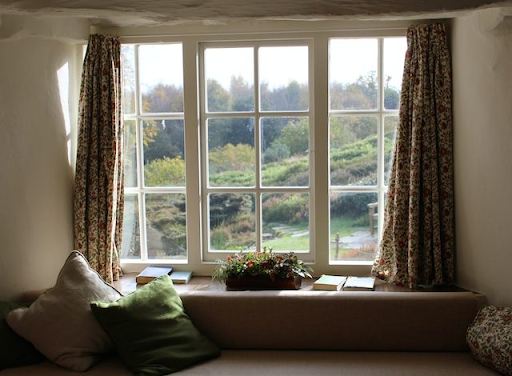Type of Door and Window Materials You Should Use in Bathrooms

When renovating our home, we often tend to ignore our bathroom windows and doors, even though it plays an integral part in the interior design and ambiance. Since it is a usable space, the emphasis is mainly on practicality and functionality, with everything beautiful taking a secondary role.
The proper door and window materials used to construct bathroom fixtures should be functional and aesthetically pleasing. But an essential thing that you should consider while picking the material is that it should withstand ongoing exposure to dampness and humidity. It’s also important to choose a natural material that complements the style of the rest of your house. Safety and durability are also important considerations when selecting the best materials for your shower area.
Continue reading this blog to find the best materials suitable for bathrooms, windows, and doors.
UPVC
The elegant and streamlined uPVC doors offer the appearance of painted wooden gates but don’t require upkeep of the absorbent, natural wood fibres. It is an excellent material for bathroom doors and windows since it is hydrophobic, which ignores temperature changes, fungus, and moodiness. Even with prolonged exposures, the material itself does not decay, deform, or fade.
The uPVC windows are also highly valued for their outstanding design, smooth surface, and durability. They don’t require much maintenance, are easy to assemble, and come in various hues and colors without additional painting or polishing costs.
Frosted Glass
This material will protect your privacy while giving your shower area a modern, sophisticated appearance. The uses for frosted glass in the home and workplace are virtually limitless and play a crucial part in fostering a calm environment.
These frosted glass windows are a fantastic alternative for any commercial or residential site because of their strong construction and long lifespan. The etched glass, which is offered in custom sizes and forms, can assist in transforming a standard loo into a fabulous and aesthetically elegant location.
Aluminium
Aluminium is a fantastic option for those searching for sturdy, affordable bathroom doors. The material is highly durable and naturally resistant to corrosion. The cost of the material is likewise relatively modest, starting at. This is a result of the material’s accessibility and ease of recycling.
Aluminium is regarded as a very environmentally friendly option for new doors because it is one of the recyclable materials. However, it is less energy-efficient than other materials due to its high thermal conductivity.
Solid Wood
Wood is a robust, long-lasting material that can endure the humidity and wetness in a shower area and loo. Solid wood is a common material used for bathroom gates and casements. But it’s crucial to remember that solid wood gates may deform or rot with time if they are not properly sealed and maintained.
Wood Plastic Composites (WPC)
Wood plastic composite has become homeowners’ favourite material for bathroom fixtures because of its water-resistance properties. Since shower areas and loos are susceptible to moisture, people have chosen WPC for their homes. Additionally, it is also often more expensive than natural wood.
WPC Gates are also pest-resistant, moisture-proof, waterproof, and anti-corrosive, making them durable. This has been used as an environmentally friendly alternative to wood that delivers greater internal strength. They even come in a variety of models and finishes.
Steel
Steel is widely used in bathroom fixtures and gives off a more modern vibe. And since this metal is more durable, doors and windows have a longer life. However, homeowners should also be aware that humidity will undoubtedly result in rusting; they’ll have to take proper care and upkeep.
Shop for the Best Quality Doors and Windows from McCoy Mart
If you want home fixtures for your bathroom and other spaces, McCoy Mart should be your one-stop. This online marketplace offers top-notch products of hardware, security, and home improvement products. In addition, they provide all the products needed to refurbish your house from reputable brands at affordable prices.




